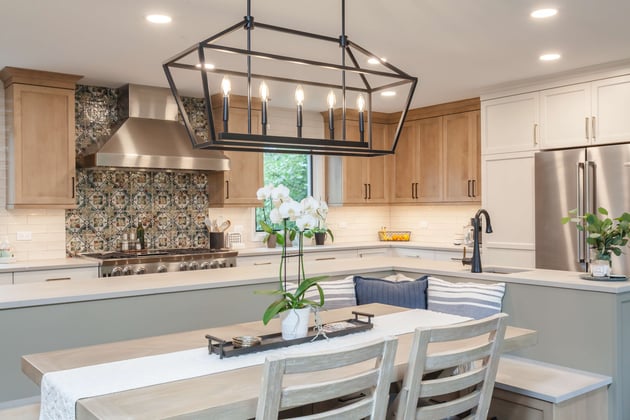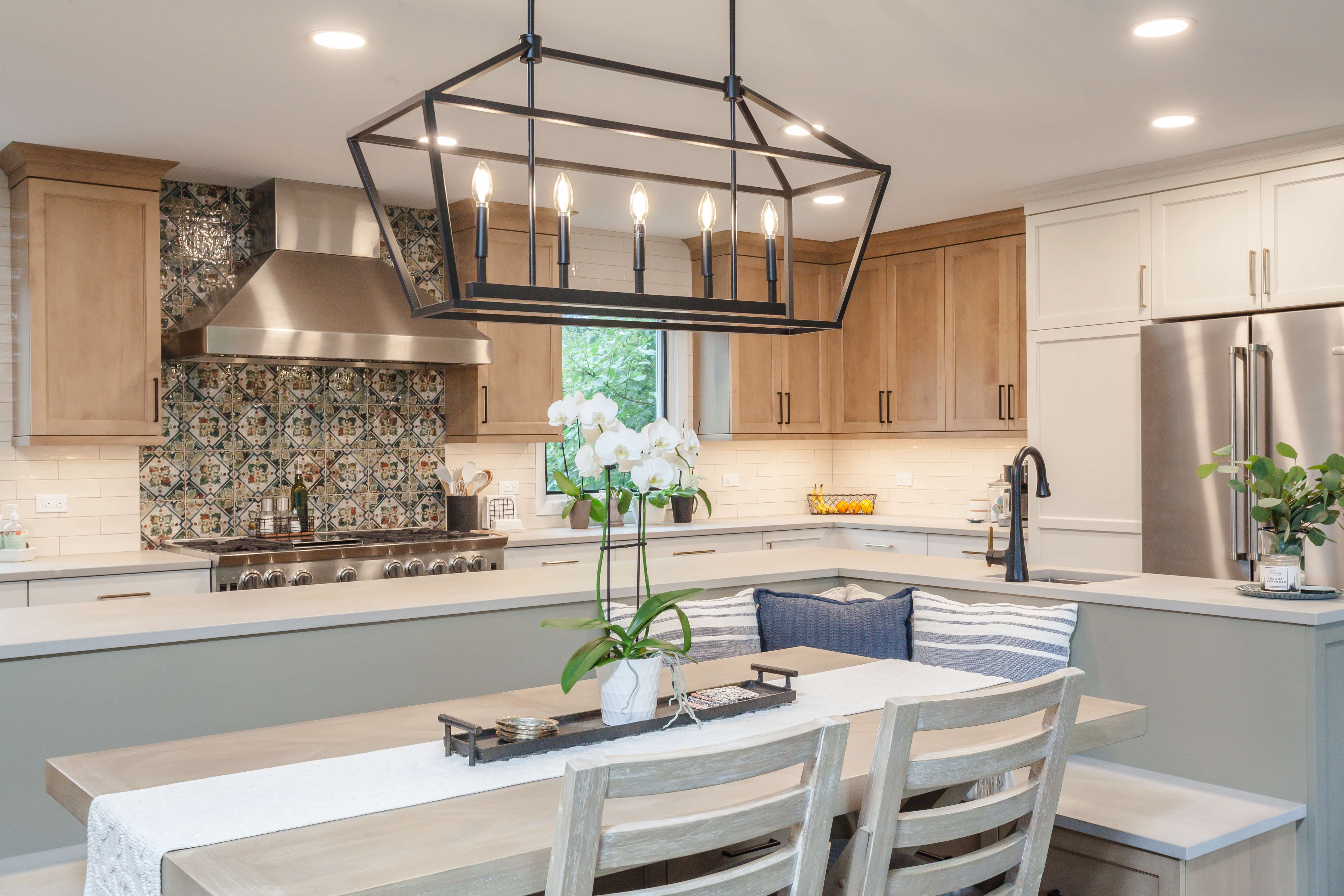Creating Balance in Design: The Rule of 3s
The key to interior design is creating balance throughout the space. To create balance, designers...


We wake up each morning to a soft light guiding us toward the coffee pot, giving our eyes time to adjust; then, once we’re ready, we shift to a brighter and cooler scene that helps us focus during the work day. Finally, we move to a warm, romantic glow that illuminates our glass of wine as we wind down for the night. As you can see, lighting plays a vital role in our day. It sets the right mood at the right time, motivates us, enlivens our morning routines, and helps the moments we spend with family glow. We want to help you set the mood of your home by sharing four ways to use lighting in your home better.
When creating your lighting plan for each room, it’s important to choose at least three different types of lighting. Layering your lighting adds depth to the room and gives you control over the space’s atmosphere. The three types of lighting you should use are
Each layer should work together to create a cohesive aesthetic. They should all match the overall design in color and material. By layering your lighting, you have complete control over the mood, as you can turn them all on when you want to set an energetic or productive atmosphere or just use the accents to create a cozier feel. Adding dimmers or app-controlled lights gives you even more control over the lighting, saves money on the electricity bill, and instantly changes the mood.
You can highlight the size and shape of the room by strategically placing your light sources around your room. Different types of lighting, like recessed lighting through the kitchen with a chandelier above the dining table, create visual interest and separate the eating area from the prep space. Uplighting, like lamps in the corners, makes a room feel larger, and low-hung pendants will create an illusion of height. Clusters of lighting make large rooms seem cozier. The key to mood lighting is creating a contrast from light at the center of the space that is typically your brightest to lighting at the perimeter, which is more task and ambiance-focused.
When using a variety of lighting, it is crucial to consider placing your lighting fixture where it will draw a significant amount of attention to create a lighting focal point. This is the fixture that draws the most attention, like a chandelier in a large room or standing lamps in a smaller one.
For smaller spaces or details, you can also draw attention to different walls, artwork, or furniture pieces by spotlighting them. You can use in-cabinet lighting, common in hutches, and glass-front cabinetry to highlight your display pieces. If it’s a TV-focused space, it needs less overhead light and more task or decorative lighting, such as lamps or backlighting.
Colors significantly impact our mood, which is why we lean on color psychology when designing a space. The project must make you feel as good as it looks. Choosing a specific shade of white or the color of a bulb is a great way to alter the mood of the space. Neutral lighter tones make a room appear larger and more inviting, while darker hues add coziness and luxury. We recommend using a 2000k to 3000k watt bulb to create a relaxing atmosphere as it produces a warm white. For an energetic, productive atmosphere, we recommend using 45000k and above bulbs as they emulate broad daylight. Colored lighting is used more in showrooms or stage sets, but sparingly in the home can add an exciting dynamic to the space. It's best to use pink, orange, and yellow lights to create a sense of warmth. Use cooler tones like blue and green to develop a sense of activity. For a romantic environment, use tinted lights on the warm side, giving the illusion of candlelight. Creative ways to implement colorful lights include LED lightbulbs, LED strips, or string lights.
When using a variety of lighting, it is crucial to consider placing your lighting fixture where it will draw a significant amount of attention to create a lighting focal point. This is the fixture that draws the most attention, like a chandelier in a large room or standing lamps in a smaller one.
Lighting can make or break your home’s design and atmosphere, which is why creating a lighting plan is essential. Contact our finishing touches coordinator if you need help setting the right mood in your home!


The key to interior design is creating balance throughout the space. To create balance, designers...

Learning to find a balance between trends and comfort comes down to one thing: personal choice....
Leave a Comment